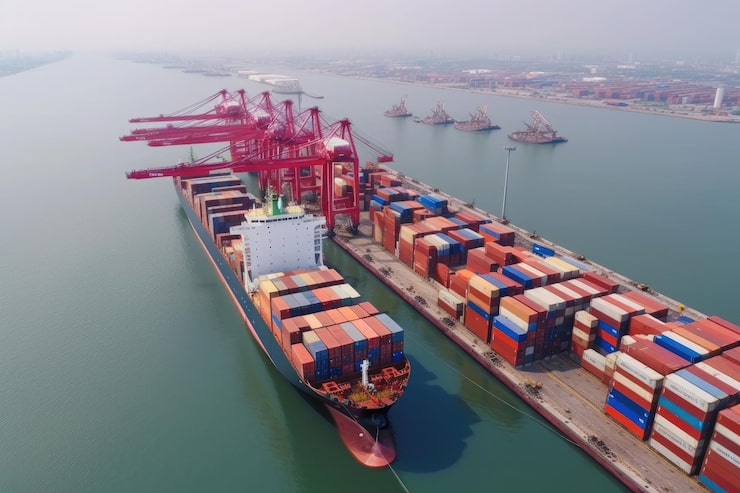The China Container Freight Index (CCFI) is one of the most critical benchmarks in global trade. Importers often struggle with unpredictable shipping costs, fluctuating market demand, and delays at major ports. However, by analyzing the index, businesses can forecast freight rates, optimize supply chain planning, and negotiate better deals with carriers.
What Is the China Container Freight Index?
The CCFI is a market indicator published weekly by the Shanghai Shipping Exchange. It tracks container freight rates on major international shipping routes departing from Chinese ports. Moreover, it reflects both spot and contractual freight rates, giving importers and exporters insight into long-term logistics planning.
Why Does the China Container Freight Index Matter?
Although many indices exist, the CCFI remains the most comprehensive. It covers routes to North America, Europe, the Middle East, South America, and Oceania. Accordingly, businesses use the index to:
- Predict changes in shipping costs.
- Compare air vs sea freight competitiveness.
- Avoid peak-season cost spikes.
- Improve supply chain resilience.
Indeed, freight forwarders and carriers also rely on the CCFI when setting their own rates.
Real Case Studies Using the CCFI
Case 1: Shenzhen → Los Angeles (LAX)
- Cargo: 1×40HQ container of electronics
- Mode: Sea freight (spot rate)
- Cost: USD 6,800 (based on CCFI)
- Transit Time: 28 days
Case 2: Shanghai → Rotterdam (NLRTM)
- Cargo: 20GP container of textiles
- Mode: Long-term contract rate
- Cost: USD 3,200
- Transit Time: 33 days
How Does the China Container Freight Index Compare with Other Indices?
| Index Name | Coverage | Strengths | Weaknesses |
|---|---|---|---|
| CCFI | China → Global | Comprehensive, contract + spot rates | Focused on China only |
| SCFI | China → Global | Tracks only spot rates | Volatile, less useful for long-term |
| FBX | Global routes | Real-time digital freight prices | Subscription required |
| BDI | Bulk cargo (not containers) | Tracks dry bulk costs | Not relevant for containerized goods |
To summarize, the CCFI is most relevant for businesses shipping from China.
How Much Do Container Shipments Cost Based on the CCFI?
| Route | Avg. Cost (USD) | Transit Time |
|---|---|---|
| China → USA (West Coast) | $5,500–$6,800 | 25–30 days |
| China → USA (East Coast) | $6,500–$8,200 | 32–38 days |
| China → Europe (Rotterdam) | $3,200–$4,000 | 30–35 days |
| China → Middle East (Dubai) | $4,200–$4,800 | 22–28 days |
| China → Australia (Sydney) | $2,900–$3,600 | 18–22 days |
Accordingly, costs shift weekly with supply and demand fluctuations.
What Factors Influence the China Container Freight Index?
| Factor | Impact |
|---|---|
| Seasonal demand | Peak Q4 increases costs by up to 40%. |
| Fuel prices | Directly affect bunker surcharges. |
| Port congestion | Raises handling and demurrage fees. |
| Carrier alliances | Capacity management stabilizes rates. |
| Global trade policies | Tariffs and sanctions shift shipping patterns. |
Thus, businesses should monitor the index alongside macroeconomic news.
How Does the CCFI Compare to Other Shipping Modes?
| Mode | Transit Time | Cost Range | Pros | Cons |
|---|---|---|---|---|
| Sea Freight | 25–40 days | $3,000–$7,000/container | Cheapest for large cargo, global coverage | Very slow, congestion delays |
| Air Freight | 5–10 days | $5–$9/kg | Fast, reliable, ideal for urgency | Expensive for bulky goods |
| Rail Freight | 15–20 days | $350–$500/CBM | Balanced speed & cost (EU only) | Limited routes beyond Europe |
In addition, many businesses use a multimodal approach, combining sea and air freight.



Which Ports Contribute to the China Container Freight Index?
The CCFI draws data from major coastal ports, including:
- Shanghai (SHANGHAI): Main hub for Europe and USA.
- Shenzhen (Yantian/Shekou): Electronics and e-commerce exports.
- Ningbo-Zhoushan: Strong for manufacturing and bulk cargo.
- Qingdao: Popular for automotive parts and machinery.
- Xiamen: Known for footwear and textile shipments.
Indeed, these ports ensure comprehensive data coverage across industries.
What Documents Are Needed When Shipping Under CCFI Routes?
| Document | Purpose |
|---|---|
| Bill of Lading (B/L) | Legal contract with carrier |
| Commercial Invoice | Declares value and HS code |
| Packing List | Details container contents |
| Certificate of Origin | Validates manufacturing country |
| Customs Declaration | Required for import/export clearance |
Proper documentation ensures that CCFI-based rate estimates remain accurate.
Pros and Cons of Using the China Container Freight Index
| Pros | Cons |
|---|---|
| Transparent view of freight costs | Only reflects China exports |
| Covers contract and spot rates | Weekly, not real-time updates |
| Trusted benchmark for negotiations | Requires interpretation skills |
| Helps forecast global trade trends | Rates fluctuate unpredictably |
Therefore, importers should use CCFI data with professional forwarder support.
Conclusion
The China Container Freight Index is an essential benchmark for importers and exporters managing global logistics. By tracking weekly changes, businesses gain transparency on costs, transit times, and shipping trends. Ultimately, combining CCFI insights with professional freight forwarder support helps companies secure competitive rates and strengthen supply chain resilience.
- Consult TJ China Freight Forwarding for the lowest quote. They will provide you with reliable, cost-effective service.
FAQs
Q1.How often is the China Container Freight Index updated?
It is updated weekly by the Shanghai Shipping Exchange and reflects both spot and contract freight rates.
Q2.Can small businesses use the China Container Freight Index effectively?
Yes, SMEs can track costs, forecast budgets, and plan inventory more effectively using the CCFI.
Q3.What’s the difference between CCFI and SCFI?
CCFI includes both spot and contract rates, while SCFI tracks only spot rates, making it more volatile.
Q4.How can I reduce costs when CCFI rates are high?
Businesses can book during off-peak seasons, use consolidation, or negotiate longer-term contracts with carriers.
Q5.Which industries benefit most from monitoring the CCFI?
Electronics, textiles, automotive, and e-commerce exporters rely heavily on the CCFI for budgeting.

